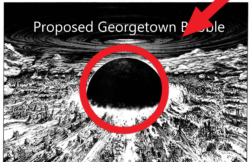We learned this week that there is no better solution to icy roads than warm weather. It’s a shame we had to wait for it.
Wednesday’s mini-storm, though only amounting to a few inches, snarled traffic and sent dozens to local emergency rooms, besides closing down Georgetown and many other schools. District government opened late. It was this year’s reminder that our nation’s capital, and to a lesser degree our university, are unprepared for winter weather.
D.C.’s response to the storm embarrassed the administration of Mayor Adrian Fenty. The mayor went to the Washington Post, attempting to respond to criticism of the city’s street clearing operation, and said the storm took his people by surprise. According to District Department of Transportation Spokesperson Erik Linden, the mid-week melee was unique for D.C. for two reasons. One, a mix of precipitation fell: sleet, snow and freezing rain. Fenty told the Post that the city expected an ice storm, not snow and sleet, so they should have switched from salting to plowing sooner. (https://jaximplant.com/) Second, after the storm, temperatures usually raise to the high 30s; temperatures were sub-freezing in the days following the snowfall.
The DDOT cleans main roads first, then secondary roads, then residential ones. Crews cleared streets until Friday. Over the weekend, crews responded if citizens called a help number. While, according to Linden, the city’s snow strategy worked very well on major and secondary roadways, Fenty admitted that side streets were not being cleared. Once the snow melted and refroze, little could be done. Neglected streets included many in the Burleith neighborhood, home to a good number of Georgetown students. Thick slush and ice could be found early this week on several of the roads.
On campus, the situation was not much better, despite the diligent work of Georgetown’s Facilities staff. At first, paths were cleared out of the snow, but then they froze over. Those paths were often narrow and inconvenient, like on the steps beside Darnall Hall, or the meandering course cut into the Leavey Esplanade. After the initial cleaning, the snow hardened into a substance akin to concrete, and future cleanup became impossible.
Linden admitted that D.C.’s snow operations are not as large as other major cities to the north like Boston and New York—and it shouldn’t be, as those cities typically get more snow and can commit more resources to clean-up. With a heavier load, they are used to dealing with the white stuff.
But both D.C. and Georgetown should improve their winter weather clean-up. Most importantly, the city should pay more attention to side streets. It should also strike the right balance between plowing and salting, depending on the conditions. This way, the roads may not freeze over as badly, and we all won’t have to wait for temperatures to go up for relief.





